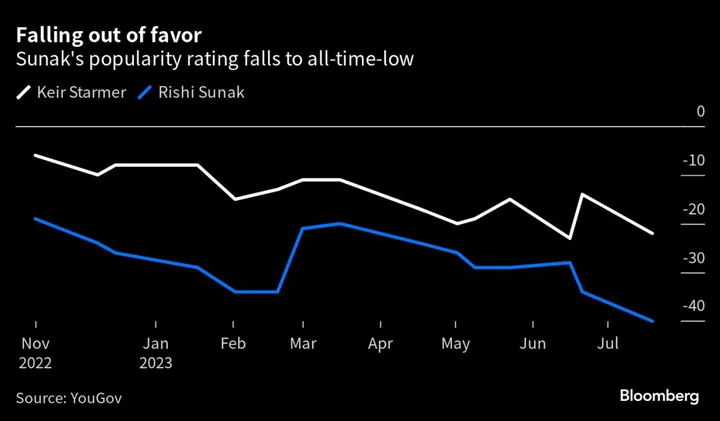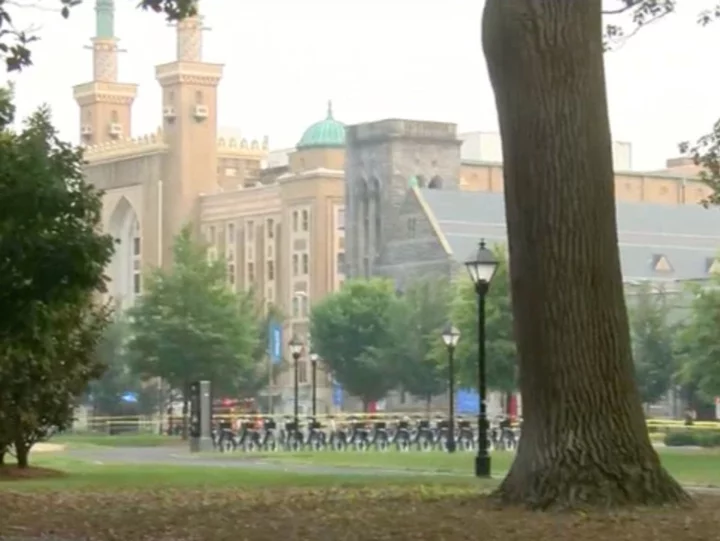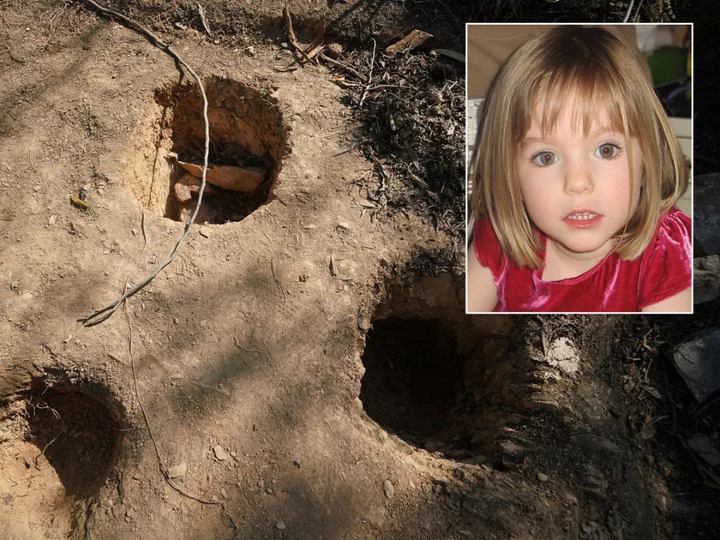Rescue teams are set to begin an attempt to evacuate a American explorer trapped 3,400 feet (1,040m) deep underground in a cave in southern Turkey. Mark Dickey, a 40-year-old experienced caver, suddenly became ill with bleeding in his degistive tract earlier this month during an international exploration mission in the Morca cave in the Taurus mountains. More than 150 rescuers from across Europe have been working to save him since. The attempt to bring Mr Dickey out of the cave is expected to begin on Saturday and could take three or four days, rescuers said. The way out is being divided into seven sections, each given to a team from a different country, due to the complexity of the operation. This is regarded as one of the most difficult cave rescues ever. Follow the latest in our live blog here "This is a difficult operation. It would take a [healthy] person 16 hours to come out. This operation will last at least three or four days," Cenk Yildiz, a regional official from Turkey's disaster relief agency, AFAD, told the IHA news agency. "Our priority is health. Our aim is to conclude this operation without anyone coming under any danger." Tulga Sener, the head of the rescue commission medical unit, told Reuters that Mr Dickey's health condition was stable and his vital signs normal, adding that three doctors would attend to him on his way up. It is believed that Mr Dickey will have to take significant rest at frequent points on the way out. Explosives will need to be used to expand some of the more narrow points of the cave to allow safe passge said Recep Salci, the head of search and rescue for AFAD, with the aim of bringing Mr Dickey up a stretcher. Rescuers will use a "security belt" system to lift him through the cave's narrowest openings. Doctors gave Mr Dickey IV fluids and 4 litres of blood inside the cave, he said. More than 30 rescuers were inside the cave on Friday afternoon, and teams comprised of a doctor and three or four others take turns staying with the American at all times, Mr Salci said. "Our aim is to bring him out and to have him hospitalised as soon as possible," Mr Salci said. Members of Italy's National Alpine and Speleological Rescue Team joined rescue teams from Bulgaria, Croatia, Hungary, Italy, Poland and Turkey late Thursday. A Turkish helicopter was on standby near the entrance of the cave, Turkish media reports said. The Italian organisation said six of their rescuers, including a doctor and nurse, reached Dickey during the night. The team planned to work to keep him stable for 15 to 20 hours before being replaced by another team. Small camps set up at different levels inside the cave gave doctors, nurses and technicians a place to rest, the group said. Mr Dickey recorded a video message that was released by Turkish authorities late on Thursday. "Hi, I'm Mark Dickey from nearly a thousands metres," Mr Dickey said in the message, dressed in a red puffer jacket and using a headlamp. "As you can see, I'm up, I'm alert, I'm talking. But I'm not healed on the inside yet, so I'm going to need a lot of help to get out of here," he added. The caving world is a really tight-knit group ,and it's amazing to see how many people have responded on the surface," Mr Dickey said in the video. "I do know that the quick response of the Turkish government to get the medical supplies that I need, in my opinion, saved my life. I was very close to the edge." The New Jersey-based cave rescue group that Mr Dickey is affiliated with said he had been bleeding and losing fluid from his stomach but had stopped vomiting and ate for the first time in days. Mr Dickey added that the response to his medical issues is "a great opportunity to show how well the international world can work together". Footage from the operation showed rescuers setting up shelters in the cavity where he was found and chatting with Dickey. Other teams from Turkey and elsewhere set up camp outside the country's third-deepest cave. Mr Dickey has been described by the European Association of Cave Rescuers as "a highly trained caver and a cave rescuer himself" who is well known as a cave researcher, or speleologist, from his participation in many international expeditions. He is secretary of the association's medical committee. The researcher was on an expedition mapping the 4,186-foot (1,276-metre) deep Morca cave system for the Anatolian Speleology Group Association, according to Yusuf Ogrenecek of the Speleological Federation of Turkey. He initially became ill on 2 September, but it took until the morning of to notify others who were above ground. Reuters and Associated Press contributed to this report Read More Two men questioned in Lebanon at Turkey's request over 2019 escape of former Nissan tycoon Sunak pledges to ‘put pressure’ on Moscow as he arrives in India for summit Helicopters airlift residents to safety from deadly floods in central Greece What is a speleologist? AP Week in Pictures: Europe and Africa Is it India? Is it Bharat? Speculations abound as government pushes for the country’s Sanskrit name
Rescue teams are set to begin an attempt to evacuate a American explorer trapped 3,400 feet (1,040m) deep underground in a cave in southern Turkey.
Mark Dickey, a 40-year-old experienced caver, suddenly became ill with bleeding in his degistive tract earlier this month during an international exploration mission in the Morca cave in the Taurus mountains. More than 150 rescuers from across Europe have been working to save him since.
The attempt to bring Mr Dickey out of the cave is expected to begin on Saturday and could take three or four days, rescuers said. The way out is being divided into seven sections, each given to a team from a different country, due to the complexity of the operation. This is regarded as one of the most difficult cave rescues ever.
Follow the latest in our live blog here
"This is a difficult operation. It would take a [healthy] person 16 hours to come out. This operation will last at least three or four days," Cenk Yildiz, a regional official from Turkey's disaster relief agency, AFAD, told the IHA news agency. "Our priority is health. Our aim is to conclude this operation without anyone coming under any danger."
Tulga Sener, the head of the rescue commission medical unit, told Reuters that Mr Dickey's health condition was stable and his vital signs normal, adding that three doctors would attend to him on his way up. It is believed that Mr Dickey will have to take significant rest at frequent points on the way out.
Explosives will need to be used to expand some of the more narrow points of the cave to allow safe passge said Recep Salci, the head of search and rescue for AFAD, with the aim of bringing Mr Dickey up a stretcher. Rescuers will use a "security belt" system to lift him through the cave's narrowest openings.
Doctors gave Mr Dickey IV fluids and 4 litres of blood inside the cave, he said. More than 30 rescuers were inside the cave on Friday afternoon, and teams comprised of a doctor and three or four others take turns staying with the American at all times, Mr Salci said.
"Our aim is to bring him out and to have him hospitalised as soon as possible," Mr Salci said.
Members of Italy's National Alpine and Speleological Rescue Team joined rescue teams from Bulgaria, Croatia, Hungary, Italy, Poland and Turkey late Thursday. A Turkish helicopter was on standby near the entrance of the cave, Turkish media reports said.
The Italian organisation said six of their rescuers, including a doctor and nurse, reached Dickey during the night. The team planned to work to keep him stable for 15 to 20 hours before being replaced by another team.
Small camps set up at different levels inside the cave gave doctors, nurses and technicians a place to rest, the group said.
Mr Dickey recorded a video message that was released by Turkish authorities late on Thursday. "Hi, I'm Mark Dickey from nearly a thousands metres," Mr Dickey said in the message, dressed in a red puffer jacket and using a headlamp.
"As you can see, I'm up, I'm alert, I'm talking. But I'm not healed on the inside yet, so I'm going to need a lot of help to get out of here," he added.
The caving world is a really tight-knit group ,and it's amazing to see how many people have responded on the surface," Mr Dickey said in the video. "I do know that the quick response of the Turkish government to get the medical supplies that I need, in my opinion, saved my life. I was very close to the edge."
The New Jersey-based cave rescue group that Mr Dickey is affiliated with said he had been bleeding and losing fluid from his stomach but had stopped vomiting and ate for the first time in days.
Mr Dickey added that the response to his medical issues is "a great opportunity to show how well the international world can work together".
Footage from the operation showed rescuers setting up shelters in the cavity where he was found and chatting with Dickey. Other teams from Turkey and elsewhere set up camp outside the country's third-deepest cave.
Mr Dickey has been described by the European Association of Cave Rescuers as "a highly trained caver and a cave rescuer himself" who is well known as a cave researcher, or speleologist, from his participation in many international expeditions. He is secretary of the association's medical committee.
The researcher was on an expedition mapping the 4,186-foot (1,276-metre) deep Morca cave system for the Anatolian Speleology Group Association, according to Yusuf Ogrenecek of the Speleological Federation of Turkey. He initially became ill on 2 September, but it took until the morning of to notify others who were above ground.
Reuters and Associated Press contributed to this report
Read More
Two men questioned in Lebanon at Turkey's request over 2019 escape of former Nissan tycoon
Sunak pledges to ‘put pressure’ on Moscow as he arrives in India for summit
Helicopters airlift residents to safety from deadly floods in central Greece
What is a speleologist?
AP Week in Pictures: Europe and Africa
Is it India? Is it Bharat? Speculations abound as government pushes for the country’s Sanskrit name









